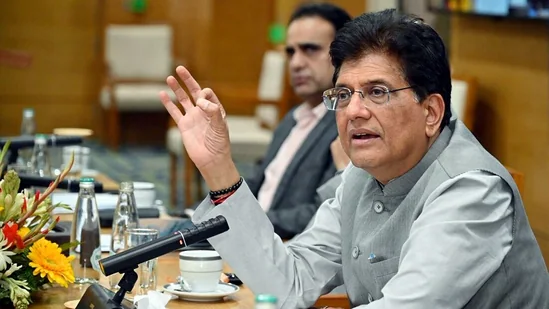India on the Fast Track to Becoming the World’s Third-Largest Economy
- MGMMTeam

- Jul 12
- 4 min read
Prime Minister Narendra Modi recently announced at the Rozgar Mela in July 2025 that India is rapidly advancing toward becoming the world’s third-largest economy. This milestone is the result of sustained efforts to boost manufacturing, foster job creation, and implement welfare programs that have lifted millions out of poverty. The country’s remarkable economic trajectory reflects a blend of government policies, private sector dynamism, and emerging sectors contributing to growth and global stature.

Manufacturing and Defence: Pillars of Economic Growth
Manufacturing has emerged as a critical driver of India’s economic rise. The government’s Production-Linked Incentive (PLI) scheme has catalyzed growth in electronics and mobile phone manufacturing, resulting in the creation of approximately 1.1 million new jobs. In just over a decade, the sector’s output has grown fivefold, reaching an impressive annual valuation of ₹11 lakh crore, supported by over 300 manufacturing units across the country. This surge underscores India’s increasing capabilities as a global manufacturing hub.
In parallel, defence manufacturing has witnessed a significant transformation, especially following strategic initiatives like Operation Sindoor. Defence production in India has now crossed ₹1.25 lakh crore, marking a pivotal step toward self-reliance in military technology and equipment. This progress not only strengthens India’s national security but also contributes to economic diversification and industrial innovation.
Employment Generation and Welfare Initiatives
India’s focus on employment generation is reflected in the ambitious Employment Linked Incentive program, which offers a monthly subsidy of ₹15,000 for the first salary of new private-sector employees. Backed by a ₹1 lakh crore budget, this initiative aims to create around 35 million new jobs, targeting youth employment as a priority. The government’s commitment to boosting employment opportunities is critical in harnessing India’s demographic dividend.
Alongside job creation, welfare schemes have played a crucial role in improving livelihoods and social inclusion. According to reports by the International Labour Organisation, over 900 million Indians have benefited from various government welfare programs in the last decade. The Pradhan Mantri Awas Yojana, aimed at providing affordable housing, has successfully facilitated the construction of more than 40 million homes, simultaneously fostering rural employment and infrastructure development. These social programs form an essential foundation for sustainable economic growth.
Current Economic Standing and Future Projections
According to the latest data from NITI Aayog and the International Monetary Fund (IMF), India has recently surpassed Japan to become the fourth-largest economy in nominal GDP terms, with an estimated GDP of approximately US $4.19 trillion. Despite this achievement, India remains behind economic giants such as the United States and China, with Germany currently holding the third position.
The IMF projects that India will overtake Germany by the fiscal year 2028, thereby securing its place as the world’s third-largest economy. This forecast is supported by steady growth rates, increasing exports, and the country’s rising influence in global markets. Additionally, in terms of purchasing power parity (PPP), India is already ranked third globally, surpassing both Japan and Germany, which reflects the relative cost of living and economic output more accurately than nominal GDP figures.
Policy Initiatives and Structural Reforms
India’s economic transformation is grounded in key policy initiatives such as “Make in India,” launched in 2014 to boost manufacturing’s share of GDP and generate millions of jobs. While the program has attracted substantial foreign direct investment and expanded industrial capacity, manufacturing’s share of GDP has seen modest changes, highlighting the need for further structural reforms.
Complementing this is the “Atmanirbhar Bharat” (Self-Reliant India) campaign, which promotes domestic production and innovation in emerging sectors including digital infrastructure, semiconductors, and quantum technology. These initiatives aim to reduce dependency on imports, increase export competitiveness, and position India as a global technology hub.
Experts such as former Chief Economic Advisor Arvind Subramanian recognize India’s potential to become a genuine economic superpower but emphasize that sustained growth will require export-led policies, effective management of global economic challenges, and continued investment in human capital.
Challenges on the Road Ahead
Despite impressive economic gains, India faces several challenges in sustaining its upward trajectory. A significant portion of the workforce, nearly 40%, remains employed in agriculture, a sector characterized by lower productivity and income levels compared to manufacturing and services. Youth unemployment remains a pressing issue, with rates hovering around 23%, underscoring the urgency to create meaningful job opportunities in modern sectors.
Moreover, while aggregate GDP growth has been strong, per capita income remains relatively low, and income inequality persists. These disparities pose risks to social cohesion and inclusive growth, calling for targeted policies to ensure equitable distribution of economic benefits.
Conclusion: Opportunities and Imperatives for India’s Economic Future
India’s journey toward becoming the world’s third-largest economy is marked by remarkable achievements in manufacturing, defence production, and social welfare. The country’s expanding industrial base, combined with strategic government initiatives and a vibrant private sector, create a fertile environment for continued growth.
To solidify its position on the global stage, India must focus on deepening export-led manufacturing, accelerating job creation outside agriculture, balancing fiscal prudence with investments, and addressing income inequality through comprehensive social policies. With these steps, India can not only meet but surpass expectations, unlocking its full potential as a major economic powerhouse in the decades to come.
(Sources: Hindustan Times, Mint, India Today)




Comments